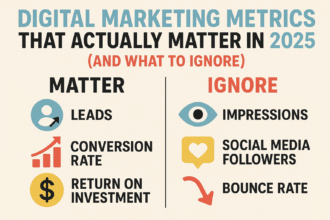The e-commerce landscape is evolving at breakneck speed, and as we hurtle towards 2025, aspiring entrepreneurs face a critical crossroads: should they build their empire on the vast, fast-moving highway of dropshipping, or carve out a unique, branded niche with print-on-demand (POD)? Both models promise low barriers to entry and the allure of location-independent income, but beneath the surface lie starkly different realities. Choosing the wrong path can mean the difference between sustainable, brand-building success and getting lost in a sea of commoditized products with razor-thin margins. This comprehensive 3000+ word guide dives deep into every facet of Dropshipping vs. Print-on-Demand, analyzing 2025’s latest market data, profit potential, operational challenges, and future trends to crown a definitive winner—or perhaps, reveal that the true victor depends entirely on your unique goals, skills, and vision. Forget generic advice; we’re delivering the granular, AI-optimized insights you need to make an informed, profitable decision for the future.
Understanding the Core Models: Definitions and Foundational Differences
Before we pit these giants against each other, it’s crucial to understand what they are and how they fundamentally operate. At first glance, both Dropshipping and Print-on-Demand appear similar: you list products online, a customer buys, and a third-party handles fulfillment. No inventory, no upfront manufacturing costs. However, the devil—and the opportunity—is in the details.
What is Dropshipping?
Dropshipping is a retail fulfillment method where a store doesn’t keep the products it sells in stock. Instead, when a store sells a product, it purchases the item from a third-party supplier (often a wholesaler or manufacturer) who then ships it directly to the customer. The merchant never sees or handles the product. The core appeal lies in its simplicity and breadth. You can offer thousands of products—from phone cases and kitchen gadgets to pet supplies and fashion accessories—without ever touching them. Your role is primarily marketing, customer acquisition, and managing the online storefront. As noted, dropshipping is better for offering a wide range of products quickly with minimal upfront costs . The model thrives on volume and agility, allowing sellers to test countless products and pivot rapidly based on market trends . However, this also means you’re often selling the same products as hundreds or thousands of other stores, leading to intense competition on price and making brand differentiation incredibly difficult .
What is Print-on-Demand (POD)?
Print-on-Demand is a specialized form of dropshipping focused exclusively on customizable products. Instead of selling pre-made items, you create and upload unique designs (graphics, text, artwork) to a POD platform. These designs are then printed onto blank products—like t-shirts, mugs, tote bags, phone cases, or posters—only after a customer places an order. The POD provider handles the printing, packaging, and shipping. Simply put, print on demand is a way to sell custom products without buying stock upfront . The essence of POD is personalization and branding. It’s ideal for building a branded business because you’re selling your own unique creations, not generic goods. This model attracts entrepreneurs who are brand-focused and enjoy the design process . The value proposition isn’t just the product itself, but the unique design or message it carries, allowing for higher perceived value and stronger customer loyalty.
Key Operational Distinctions
The primary difference boils down to customization and control. Dropshipping offers more product variety but less control over the final product, as you’re reliant on generic, mass-produced items from suppliers . Print-on-Demand, conversely, gives you complete creative control over the design, allowing for deep branding, but confines you to the product catalog offered by your POD partner (e.g., you can’t print your design on a toaster if the provider doesn’t offer it). Another significant difference is in the supply chain. Dropshipping often involves sourcing from global suppliers, which can lead to longer shipping times and potential quality inconsistencies. POD, while also outsourced, typically involves a more standardized production process for each item, which can lead to more predictable quality (though turnaround times can still vary).
Market Size and Growth Projections: The 2025 Landscape
Understanding the sheer scale and trajectory of these markets is vital for assessing their long-term viability and potential. The numbers paint a picture of two booming, yet distinct, industries.
Dropshipping Market: A Behemoth in Motion
The global dropshipping market is colossal and shows no signs of slowing down. Projected figures vary slightly, but the consensus points to a market valued at hundreds of billions. One projection estimates the Dropshipping Market Size to reach $372.47 Billion by 2025 . Another source suggests the market is projected to grow from $470.92 billion in 2025, indicating its massive scale and continued expansion . This immense size is a double-edged sword. It signifies a proven, robust model with vast consumer demand, but it also translates to ferocious competition. Standing out in such a crowded arena requires exceptional marketing skills, niche selection, and often, significant advertising spend. The market’s growth is being fueled by increasing global internet penetration, the convenience of online shopping, and the continuous emergence of new, low-cost suppliers, particularly from regions like China and Southeast Asia.
Print-on-Demand Market: The High-Growth Niche Challenger
While smaller in absolute terms compared to the dropshipping giant, the Print-on-Demand market is experiencing explosive, hyper-growth. This is where the real dynamism for 2025 lies. Estimates for the global POD market in 2025 range from $7.49 billion to $8.16 billion and even $12.96 billion . The variance likely stems from different methodologies and what is included in the “POD market” definition. Regardless of the exact figure, the growth rate is staggering. The market is experiencing an annual growth rate of 25.3% , with other projections citing a compound annual growth rate (CAGR) of 23.6% or even 27.8% . Experts project the global print-on-demand market will grow at a compound annual growth rate (CAGR) of 23.6% . This rapid expansion is driven by powerful consumer trends: the rising demand for personalization, sustainability, and simplicity . Consumers increasingly want products that reflect their individuality, values, and affiliations, which is the sweet spot for POD. This growth signals a strong opportunity for business owners looking to start or expand their POD business .
Head-to-Head: Scale vs. Speed
In 2025, Dropshipping wins on sheer market size, offering access to a vast ocean of potential customers and products. However, Print-on-Demand is the undisputed champion of growth rate. Its niche, focused on customization and unique branding, is expanding much faster than the broader, more commoditized dropshipping market. For entrepreneurs seeking a piece of a rapidly expanding pie where differentiation is easier, POD presents a compelling case. For those comfortable navigating a mature, highly competitive market with the potential for massive volume, dropshipping remains a powerful option. The choice isn’t about which market is “bigger,” but which growth trajectory and market dynamic aligns with your business strategy.
Profitability Showdown: Analyzing Margins, Costs, and Revenue Potential
Profitability is the lifeblood of any business. Let’s dissect the financial anatomy of both models to see where the real money is made—or lost—in 2025.
Dropshipping Profit Margins: The Volume Game
Dropshipping is often perceived as having higher profit margins, especially when sourcing very low-cost items from overseas suppliers . The average dropshipping profit margin is frequently cited as being between 15% and 20% . However, this is a highly optimistic average that masks a harsh reality. Many sources suggest a more realistic net profit margin for dropshipping hovers around 10% , with a broader range of 10% to 30% depending heavily on the niche, product, and operational efficiency . The biggest challenge in dropshipping is managing thin profit margins while covering costs like product sourcing, shipping, marketing, and platform fees . Why are margins so tight? Intense competition forces price wars, marketing costs (especially for paid ads on platforms like Facebook and Google) can be substantial, and hidden costs like returns, chargebacks, and supplier errors can quickly erode profits . To succeed, dropshippers must master the volume game—selling a high quantity of items to compensate for the low margin per sale.
Print-on-Demand Profit Margins: The Value Premium
Print-on-Demand margins are often seen as lower due to the higher base cost of producing a custom item. Production costs more because each item gets made individually . The average print-on-demand product profit margin is frequently reported at 20% , with most online sellers finding success with this figure as a good middle ground . Other analyses suggest a range of 10% to 20% , or 15% to 30% depending on the product and platform . While the base cost is higher, POD has a crucial advantage: customers are willing to pay more for customized, unique products . This allows for better pricing power and less direct price competition. You’re not competing with 500 other stores selling the exact same plain black t-shirt; you’re selling a t-shirt with your unique design, which commands a premium. This makes POD potentially more sustainable in the long run, as it’s built on brand value rather than price undercutting .
Startup Costs: Getting Your Foot in the Door
Both models are lauded for their low startup costs compared to traditional retail, making them accessible to beginners . By outsourcing supply and shipping, both models have far fewer startup costs than a traditional wholesale business . You can start dropshipping on Shopify for less than $100, covering domain, basic theme, and initial app subscriptions . Similarly, most sellers can get started with Print on Demand for as little as $0–$350, depending on whether they invest in design software or paid marketing tests . This is a major pro for both: low start-up costs make dropshipping a great business model for those with a limited budget . However, a crucial caveat exists for POD: if you plan to handle printing yourself (which is rare for beginners and negates the “on-demand” benefit), investment in digital printing equipment can range from $10,000 to $30,000 . For the standard POD model using third-party providers, startup costs are very low for both.
Revenue Potential: Scaling to Success
Revenue potential is theoretically unlimited for both, constrained only by marketing effectiveness and operational capacity. However, the paths to high revenue differ. In dropshipping, scaling often means finding more winning products, expanding into new niches, or increasing ad spend to drive more traffic. An impressive 3.8% of print on demand stores have an estimated monthly revenue surpassing $50,000, indicating that high revenue is achievable with the right strategy . For dropshipping, reaching these heights typically requires sophisticated automation, a large product catalog, and significant capital for advertising. POD scaling is more about building a strong brand, expanding your design catalog, and leveraging organic marketing (like social media and influencer partnerships) alongside paid ads. Both models offer remarkable scalability , but POD’s path often feels more organic and brand-centric, while dropshipping’s is more transactional and volume-driven.
Operational Deep Dive: Managing Logistics, Customer Service, and Quality
Beyond the numbers, the day-to-day operational experience of running a Dropshipping or POD business varies significantly. This is where many entrepreneurs encounter unexpected challenges—or pleasant surprises.
Logistics and Fulfillment: Speed vs. Consistency
Dropshipping logistics can be a minefield. You rely on multiple, often overseas, suppliers. This can lead to inconsistent shipping times, tracking issues, and inventory discrepancies. A supplier running out of stock can leave you scrambling. While automation and API integration can help avoid operational errors , the lack of direct control is a constant risk. POD logistics are generally more streamlined. You work with one or a few dedicated POD partners who handle the entire production and shipping process for your custom items. This leads to more consistent fulfillment, though production time (the time it takes to print the item) adds an extra step before shipping begins. In 2025, the gap in delivery times between POD/dropshipping and traditional retail is closing gradually, reducing a major friction point .
Customer Service: The Hidden Battleground
Customer service is often cited as a major pain point in dropshipping. Issues like long shipping times, damaged goods, or incorrect items require you to act as the intermediary between the angry customer and an often unresponsive or slow supplier. This lack of control can severely damage your brand reputation . Managing customer service in print-on-demand is usually more straightforward . Since you’re working with a single, professional POD provider, resolving issues like print defects or shipping delays is typically a more direct and efficient process. However, one significant drawback of the print-on-demand model is the potential for delays in customer service if the POD provider itself is overwhelmed or inefficient . Overall, POD tends to offer a more manageable customer service experience.
Product Quality and Control: The Brand Reputation Factor
This is a critical differentiator. In dropshipping, you have very little control over product quality. You’re at the mercy of your supplier. Receiving a batch of low-quality goods can lead to a flood of returns and negative reviews, which are incredibly damaging. This lack of control over product quality is a major con . With POD, while you don’t manufacture the blank product (e.g., the t-shirt or mug), you have complete control over the design and choose the POD provider based on their reputation for print quality and materials. Reputable POD companies offer samples, allowing you to vet quality before selling. This gives you significantly more control over the final product that bears your brand name, which is crucial for long-term brand building.
Branding and Marketing: Building an Audience vs. Chasing Trends
Your marketing strategy will look vastly different depending on whether you choose Dropshipping or Print-on-Demand. One is about capturing fleeting attention; the other is about cultivating lasting loyalty.
Dropshipping Marketing: The Art of the Hustle
Dropshipping marketing is often transactional and trend-focused. Success hinges on identifying “winning products”—items with high perceived value, low cost, and strong viral potential. Marketing revolves heavily around paid social media advertising (Facebook, Instagram, TikTok), using eye-catching creatives and urgency-driven copy. The goal is to generate a quick burst of sales before the market saturates or the trend dies. Building a recognizable brand is extremely difficult because you’re selling generic products. Marketing efforts are sales-driven, not brand-focused . The focus is on driving traffic and conversions for individual products, making it a constant game of product testing and ad optimization.
Print-on-Demand Marketing: The Power of Story and Community
POD marketing is inherently brand-centric. You’re not just selling a product; you’re selling a design, a message, an identity, or a community. This opens up powerful organic marketing channels. You can build an audience on social media by sharing your design process, the story behind your brand, or content that resonates with your target niche (e.g., humor for a meme store, inspiration for a fitness brand). Influencer marketing is highly effective, as influencers can authentically connect with their audience using your unique designs. Email marketing becomes a tool for nurturing loyal customers who identify with your brand, not just your latest product. Print on demand is a better fit if you want to sell your own custom products or branded merchandise and you’re brand-focused . Marketing becomes about building a tribe around your aesthetic or message, leading to higher customer lifetime value and repeat purchases.
Best Niches for 2025: Where to Plant Your Flag
Choosing the right niche is paramount for success in either model. Here’s where the 2025 trends are pointing.
For Dropshipping, profitable niches often revolve around solving specific problems or tapping into enduring interests. Top niches include pet wellness, eco-friendly homeware, smart accessories , sustainable products, kids’ items, and office supplies . Digital products like eBooks, templates, and online courses are also highly profitable due to their zero marginal cost .
For Print-on-Demand, success lies in passionate communities and evergreen interests. The best niches include health and fitness, animals and pets, humor, and internet memes . Trending areas for 2025 include sustainability & eco-friendly products, designs related to specific events (like an Inauguration Day), and themes around popular culture like gaming . As long as there’s a dedicated community, most niches can be profitable . One of the best dropshipping niches in 2025 is actually Print On Demand itself, highlighting its crossover appeal .
The Future Outlook: AI, Sustainability, and What’s Next for 2025 and Beyond
The e-commerce world doesn’t stand still. To choose a winning model, you need to look ahead at the forces shaping the future.
Dropshipping in 2025: Automation, AI, and Niche Domination
The future of dropshipping is being shaped by technology and specialization. AI and automation are key trends . AI-powered dynamic pricing will allow stores to adjust prices in real-time based on demand and competition . Automation will streamline order processing and customer service, reducing errors and operational costs . The “spray and pray” approach of selling hundreds of random products is dying. The future belongs to niche domination—stores that become the go-to expert for a specific category (e.g., ergonomic home office gear, premium pet grooming tools). Sustainability is also becoming a factor, with consumers demanding more eco-conscious shipping and packaging .
Print-on-Demand in 2025: Hyper-Personalization, AI Design, and Eco-Consciousness
The future of print on demand looks exceptionally strong, driven by consumer demand for customization and sustainability . AI technology will play a huge role, not just in marketing but in design. AI tools will help creators generate unique design concepts, personalize products for individual customers at scale, and optimize designs for different products . The rising demand for personalization is a core driver of the POD market . Sustainability is not just a trend but a necessity; eco-friendly printing materials and processes are becoming a major selling point . The market for eco-friendly clothing alone is projected to reach $10.1 billion by 2025 . Web-to-print solutions will make the customization process even smoother for consumers .
Convergence? The Rise of Hybrid Models
An interesting trend is the blurring of lines. Some savvy entrepreneurs are combining both models. They might use dropshipping for generic, high-demand accessories while using POD for their core branded merchandise (t-shirts, hats, mugs). This allows them to capture quick sales with dropshipping while building a loyal, branded audience with POD. Dropshipping Print On Demand Products is becoming a recognized strategy, leveraging the fulfillment ease of dropshipping with the customization power of POD .
Case Studies: Real-World Wins and Lessons Learned
Let’s look at two hypothetical, yet realistic, case studies to illustrate the practical application of these models.
Case Study 1: “TrendTaker” – The Dropshipping Dynamo
- Model: Dropshipping
- Niche: Home & Kitchen Gadgets
- 2025 Strategy: “TrendTaker” uses AI-powered tools to scour social media and supplier catalogs daily, identifying micro-trends (e.g., a unique avocado slicer, a LED-lit makeup mirror). They create high-converting TikTok and Instagram ads for each product, driving traffic to a simple Shopify store. They focus on products with a 5x markup potential. They run the product for 2-4 weeks, scaling ad spend aggressively until competition drives margins below 15%, then they kill the product and move to the next.
- Outcome: “TrendTaker” generates $80,000 in monthly revenue during peak periods but operates on a 12% net margin after ads and fees. They have no recognizable brand; customers come for the product, not the store. They face constant customer service issues with delayed shipments from suppliers.
- Lesson: Dropshipping can generate high revenue quickly but requires constant hustle, sophisticated ad skills, and acceptance of thin margins and operational headaches. It’s a volume and velocity game.
Case Study 2: “WildSoul Designs” – The POD Brand Builder
- Model: Print-on-Demand
- Niche: Nature-Inspired Art & Quotes for Outdoor Enthusiasts
- 2025 Strategy: “WildSoul Designs” focuses on creating beautiful, original illustrations and typography centered around hiking, camping, and environmental conservation. They build an Instagram following by sharing their art process, stunning nature photos, and stories about the outdoors. They partner with micro-influencers in the hiking community. They use a premium POD provider known for eco-friendly inks and organic cotton shirts, which they highlight in their marketing.
- Outcome: “WildSoul Designs” generates $35,000 in monthly revenue with a consistent 25% net margin. They have a loyal customer base that buys multiple items and eagerly awaits new designs. Customer service is minimal, mostly handled efficiently by their POD partner. They’ve built a recognizable, values-driven brand.
- Lesson: POD allows for building a sustainable, branded business with healthier margins and a more manageable operational load. Success comes from authentic community building and high-quality, unique designs, not chasing fleeting trends.
Which Model Wins in 2025? The Verdict Based on Your Goals
So, after this exhaustive analysis, which model truly wins in 2025? The answer, frustratingly but honestly, is: it depends on you.
There is no single “winner.” Instead, there are two powerful models suited to different entrepreneurial personalities, goals, and skill sets.
Choose Dropshipping in 2025 If You:
- Are highly skilled in digital marketing, particularly paid advertising and conversion rate optimization.
- Thrive in a fast-paced, high-volume, transactional environment.
- Enjoy the thrill of the hunt—finding and capitalizing on the next viral product.
- Are comfortable with lower profit margins and understand you need to sell at scale.
- Don’t mind being a middleman and aren’t focused on building a long-term, recognizable brand.
- Want to test the e-commerce waters with minimal upfront investment and maximum product flexibility.
- Pros: Low startup costs, huge product variety, high scalability, flexibility .
- Cons: Fierce competition, low profit margins, limited control over logistics and quality, challenging customer service, difficulty building brand loyalty .
Choose Print-on-Demand in 2025 If You:
- Are creative, enjoy design, or have a strong visual aesthetic.
- Want to build a unique, branded business that stands for something.
- Prefer marketing that involves storytelling, community building, and organic growth.
- Value higher perceived product value and are comfortable with slightly higher base costs for better margins.
- Desire more control over the final product and a more straightforward customer service experience.
- Are passionate about a specific niche or community.
- Pros: High customization, strong branding potential, more straightforward customer service , rising market driven by personalization , potentially more sustainable long-term .
- Cons: Higher per-unit production costs, limited to POD provider’s product catalog, reliant on design appeal, production time adds to delivery.
The Ultimate Winner for 2025: The Prepared Entrepreneur
The true “winner” in 2025 isn’t Dropshipping or Print-on-Demand—it’s the entrepreneur who chooses the model that aligns perfectly with their strengths, resources, and long-term vision. For those seeking quick, high-volume sales and who excel at performance marketing, Dropshipping remains a viable, albeit challenging, path. For those seeking to build a lasting, brand-driven business with creative control and healthier margins, Print-on-Demand is the clear frontrunner, especially given its explosive growth trajectory and alignment with powerful consumer trends like personalization and sustainability.
FAQs: Your Top Questions About Dropshipping vs. Print-on-Demand Answered
Q1: Is Print-on-Demand still profitable in 2025?
Yes, Print-on-Demand is not only profitable but is one of the fastest-growing e-commerce segments. The market is projected to reach billions by 2025 with a CAGR exceeding 23% . While the average profit margin is often cited at 20% , savvy sellers focusing on unique designs and strong branding can achieve 25-30% or more . Its profitability is driven by consumers’ willingness to pay a premium for personalized, unique items .
Q2: Can you make more money with Dropshipping or Print-on-Demand?
It depends on your definition of “more money.” Dropshipping has the potential for higher absolute revenue due to its massive market size and ability to sell high volumes of low-cost items. However, net profit margins are typically lower (around 10-15%) . Print-on-Demand often yields higher profit margins (15-30%) on lower overall sales volume because you’re selling unique, branded goods. A successful POD store can be more profitable per sale, while a successful dropshipping store might generate more total revenue but with thinner margins.
Q3: Which is easier to start for a complete beginner in 2025?
Both are relatively easy to start with low upfront costs . However, Print-on-Demand might have a slightly gentler learning curve for beginners. Setting up a POD store involves choosing designs, selecting products from a catalog, and marketing your brand—tasks that are more creative and less reliant on complex ad algorithms. Dropshipping requires mastering product research, negotiating with (often overseas) suppliers, and running sophisticated, data-driven ad campaigns from day one, which can be overwhelming. Managing customer service in print-on-demand is usually more straightforward , which is a big plus for new entrepreneurs.
Q4: How is AI changing Dropshipping and Print-on-Demand in 2025?
AI is revolutionizing both models. In Dropshipping, AI is used for dynamic pricing, automated product research, ad optimization, and customer service chatbots . In Print-on-Demand, AI is becoming a powerful design tool, helping creators generate unique graphics, personalize products for individual customers, and even predict design trends . AI is also streamlining operations and logistics for both models, making them more efficient and scalable .
Q5: What are the biggest risks for each model in 2025?
For Dropshipping, the biggest risks are intense competition leading to price wars and razor-thin margins, lack of control over product quality and shipping leading to customer dissatisfaction, and increasing advertising costs on major platforms . For Print-on-Demand, the main risks are reliance on the POD provider’s production quality and turnaround times, the challenge of standing out in a crowded design market, and the potential for design theft or copyright infringement. Both models face risks from changing platform algorithms (e.g., Facebook, Google) and economic downturns affecting consumer spending.








